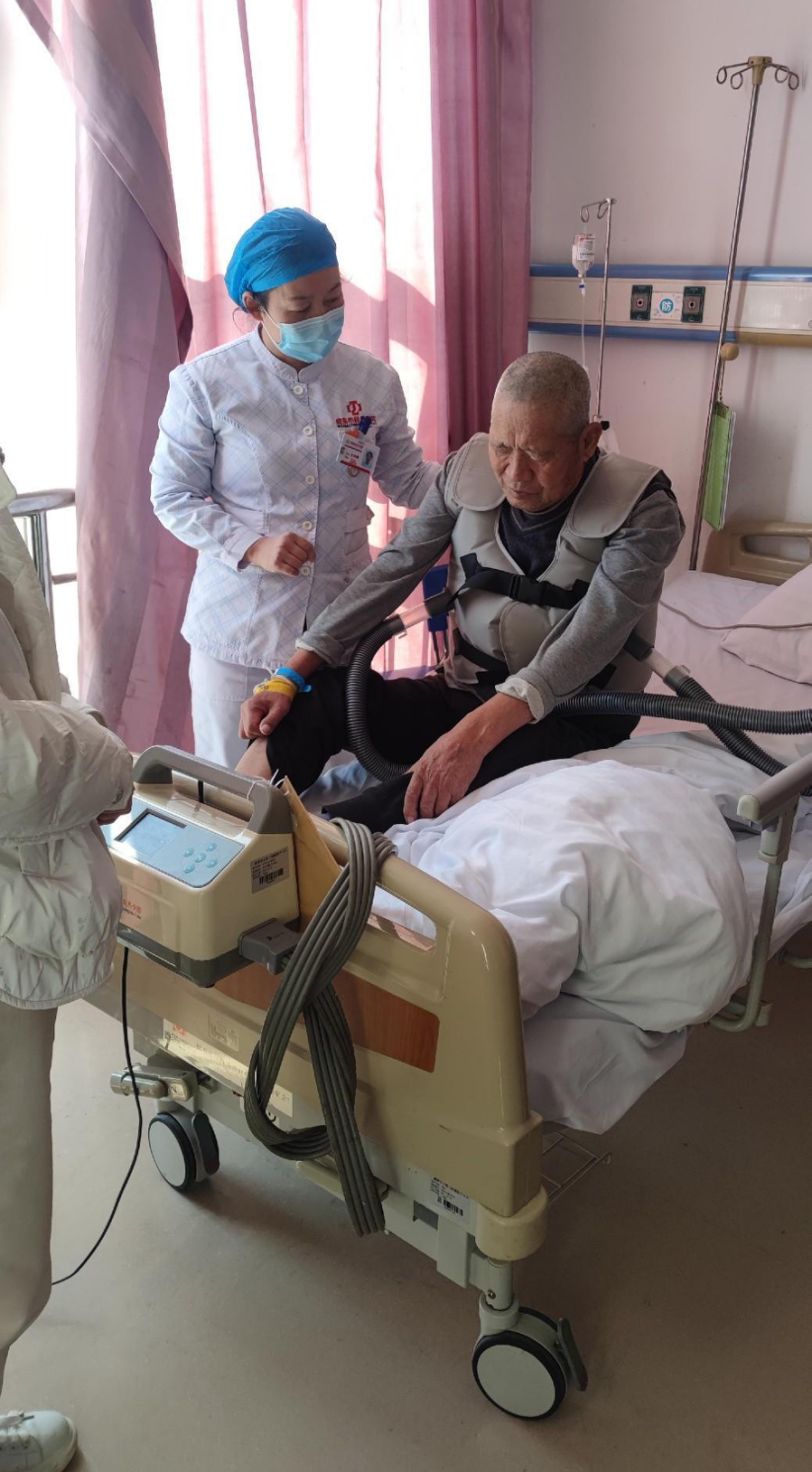Case Study: Application of a High-Frequency Chest Wall Oscillation (HFCWO) Vest for Postoperative Respiratory Therapy

Patient History
A 72-year-old male with a history of chronic obstructive pulmonary disease (COPD) and stage II lung cancer underwent a lobectomy. Aging-related decline in respiratory muscle strength, underlying COPD, and postoperative pain contributed to ineffective mucus clearance, placing the patient at risk for postoperative pulmonary complications (PPCs) such as atelectasis and pneumonia.
Clinical Challenge
The patient’s compromised cough efficacy and retained secretions required airway clearance therapy (ACT) to prevent respiratory deterioration. Traditional manual chest physiotherapy (CPT) was limited by the patient’s pain threshold and staff availability.
Intervention: HFCWO Vest System
The healthcare team initiated high-frequency chest wall oscillation (HFCWO), a non-invasive device that mobilizes bronchial secretions via mechanical vibration.
Procedure
Device Setup
Pneumatic Vest: Adjustable, worn over the chest and connected to a programmable air pulse generator.
Settings:
Frequency: 10–15 Hz (optimizes mucus loosening).
Pressure: 25–45 cm H₂O (balanced to avoid discomfort or rib injury).
Session Duration: 20 minutes, twice daily, synchronized with postural drainage.
Adjunctive Therapies
Pre-session Nebulization: Administered albuterol (bronchodilator) and acetylcysteine (mucolytic) via a jet nebulizer to liquefy mucus and enhance clearance.
Cough Assistance: Between sessions, the patient performed controlled coughing techniques (e.g., huff coughing) to expel mobilized secretions.
Monitoring and Adjustments
Parameters Monitored: Pre- and post-session oxygen saturation (SpO₂), respiratory rate, and sputum volume.
Progressive Adjustments: Oscillation frequency increased as tolerance improved.
Outcomes
Day 3: Reduced wheezing and crackles on auscultation; chest X-ray showed resolution of mild atelectasis.
Day 7: Sputum production decreased by 60%; SpO₂ improved to 95% on room air (from 92% pre-treatment).
Patient Feedback: Reported reduced dyspnea and easier breathing during mobilization.
Mechanism of Action
The HFCWO vest generates oscillatory airflow, which:
Shears mucus plugs from airway walls.
Aids ciliary action to propel secretions proximally.
Reduces reliance on voluntary cough effort, critical for patients with pain or muscle weakness.
Major Benefits Over Traditional Methods
Consistency: Standardized, reproducible treatment compared to manual CPT.
Patient Compliance: Enhanced tolerance via adjustable intensity and reduced pain.
Integration with Other Therapies: Complements nebulized medications and breathing exercises.
Clinical Recommendations
Prophylactic Use: Administer HFCWO in high-risk patients (e.g., elderly, COPD, prolonged surgery) to prevent PPCs.
Combine with Preoperative Training: Use incentive spirometry and pursed-lip breathing for synergistic effects.
Monitor for Side Effects: Watch for rib discomfort or arrhythmias; adjust parameters as needed.
This case demonstrates the efficacy of HFCWO in optimizing postoperative respiratory outcomes, particularly in high-risk populations. For technical specifications or procurement details, consult medical device guidelines or institutional policies.





